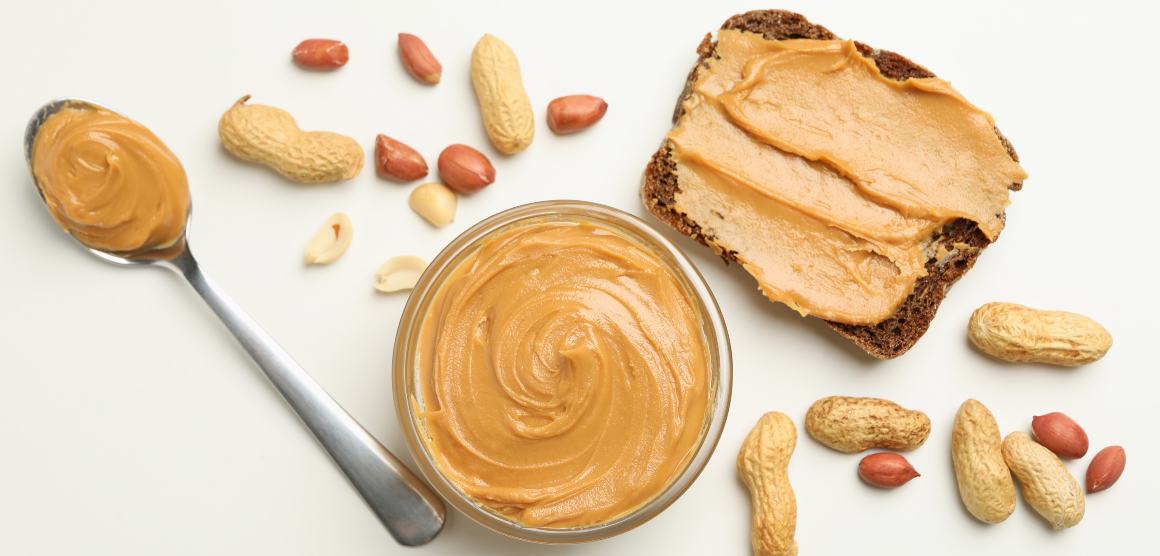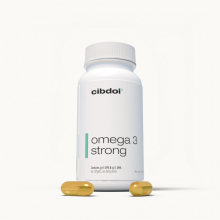Is Peanut Butter High in Omega-6 Fatty Acids?
Published:
Peanut butter is a popular, nutritious spread made from ground peanuts. It's high in heart-healthy fats and plant protein but also contains a considerable amount of omega-6 fatty acids. This article reviews whether peanut butter is high in inflammatory omega-6s and provides tips on enjoying it as part of a balanced diet.
Contents:
What Are Omega-6 Fatty Acids?
Omega-6 fatty acids are a family of polyunsaturated fats that are essential nutrients for humans. The main omega-6 fat is linoleic acid (LA), which can be converted into other biologically active omega-6s like gamma-linolenic acid (GLA) and arachidonic acid (AA).

These fats are involved in vital processes like controlling inflammation, blood clotting, brain function, and hormone regulation. However, most modern diets provide far more omega-6s than necessary, primarily from vegetable oils and processed foods.
Excessive omega-6 consumption coupled with inadequate omega-3 intake can lead to an imbalance that promotes systemic inflammation, raising the risk of chronic diseases like heart disease, diabetes, and arthritis.
Therefore, although some dietary omega-6 fat is essential, it's important not to overdo it.
How Much Omega-6 is in Peanut Butter?
Peanut butter contains a significant amount of omega-6 fatty acids, though the exact amount can vary by brand.
On average, a 2-tablespoon (32 grams) serving of regular peanut butter provides around 5–6 grams of omega-6 linoleic acid (LA), which supplies 25–30% of the Daily Value (DV).
However, some natural peanut butters have an even higher omega-6 content, providing up to 10 grams of LA per serving.
For comparison, most health organizations recommend omega-6 intake not exceed 5–8% of calories for optimal health. This equates to around 11–17 grams per day on a 2,000 calorie diet.
Just 2 tablespoons of peanut butter may provide up to a third of the recommended daily upper limit for omega-6 consumption.
Top 3 Reasons Peanut Butter is High in Omega-6
There are three main reasons why peanut butter is so high in inflammatory omega-6 fatty acids compared to other healthy fats:
1. High LA Content of Peanuts
Peanuts naturally contain a high amount of LA, averaging around 30% of total fat content. Since peanut butter consists of pureed peanuts, it inherits this same fatty acid profile.
2. Peanut Oils
Some peanut butter brands add back a portion of the peanut oil removed during processing. Peanut oil contains around 30 grams of omega-6 LA per tablespoon, further increasing the omega-6 content.
3. Hydrogenated Oils
Heavily processed peanut butters often contain hydrogenated oils rich in LA to prevent separation. Partially hydrogenated oils produce transfats that may raise heart disease risk.
So in addition to peanuts themselves being naturally high in omega-6s, certain manufacturing practices can make peanut butter even richer in these inflammatory fats.
Omega-6 to Omega-3 Ratio in Peanut Butter
Another concern with the omega-6 content of peanut butter is that it contains very little omega-3 fats to counterbalance the high LA levels.
Peanuts only provide around 0.1 grams of the omega-3 fat alpha-linolenic acid (ALA) per serving. Most varieties of peanut butter have an omega-6 to omega-3 ratio around 50:1.
For optimal health, this ratio should be closer to 2:1 or 3:1 according to most nutrition organizations. The extremely high omega-6 to omega-3 imbalance in peanut butter can promote inflammation.
4 Tips for Balancing Your Intake
If you regularly eat peanut butter, here are some tips for minimizing potentially negative effects from its high omega-6 content:
1. Limit Portions
Stick to a 1–2 tablespoon serving per day rather than overdoing it. Spread it thinly rather than eating heaping spoonfuls.
2. Choose Natural Versions
Look for natural peanut butter without added oils or hydrogenated oils to avoid excess omega-6.
3. Pair with Omega-3s
Combine peanut butter with omega-3-rich foods like fish, walnuts, flaxseeds or chia seeds to balance your intake.
4. Supplement with Omega-3s
Taking an omega-3 supplement like fish oil capsules helps counterbalance dietary omega-6s from peanut butter.
Moderating your peanut butter intake, choosing quality natural brands without added oils, and pairing it with omega-3 foods or supplements can help mitigate concerns about its high omega-6 content.
Potential Benefits of Reducing Excess Omega-6
Scaling back on excess omega-6 fat intake from sources like peanut butter and increasing anti-inflammatory omega-3 fats may provide these health benefits:
1. Lower Inflammation
Rebalancing your omega-6 to omega-3 ratio helps control chronic inflammation, a key driver of many diseases.
2. Improve Mental Health
Higher omega-3 intake combined with less excess omega-6s benefits depression, anxiety, ADHD and other mental health issues.
3. Reduce Heart Disease Risk
Optimizing your omega-6 to omega-3 balance lowers heart disease risk factors like high LDL cholesterol, triglycerides and blood pressure.
4. Support Brain Function
More omega-3 fatty acids and a lowered omega-6 to omega-3 ratio promote healthy brain aging and cognition.
5. Benefit Skin Health
Correcting omega imbalance helps reduce inflammatory skin conditions like eczema, acne and psoriasis.
In summary, scaling back dietary sources of omega-6 like peanut butter while increasing omega-3s provides widespread benefits for both physical and mental health.
Main Takeaways on Peanut Butter and Omega-6
- Peanut butter is high in omega-6 fat called linoleic acid (LA), with 2 tablespoons providing around 5-10 grams.
- Reasons for its high omega-6 content include the LA in peanuts, added peanut oil and hydrogenated oils in processing.
- Peanut butter has an extremely imbalanced omega-6 to omega-3 ratio around 50:1, which can promote inflammation.
- Tips for balancing intake include limiting portions, choosing natural brands and pairing with omega-3s from fish, walnuts or supplements.
- Reducing excess omega-6 intake from peanut butter while optimizing omega-3 intake benefits multiple aspects of health.
In conclusion, peanut butter is relatively high in inflammatory omega-6 fatty acids compared to other healthy fats. Moderating intake, choosing quality brands and balancing it with omega-3s can allow you to enjoy it as part of an overall anti-inflammatory diet.















